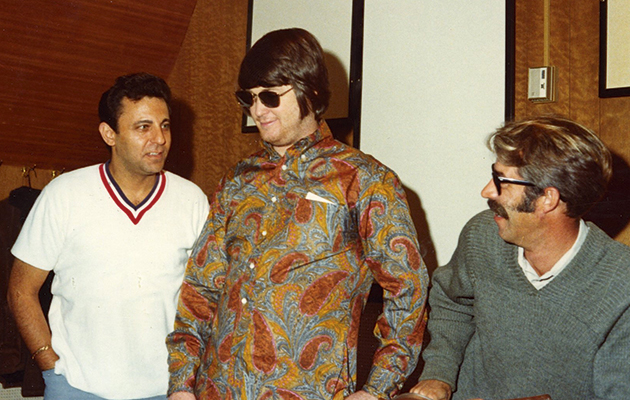Among the many talking heads in Denny Tedesco’s film about LA’s hired help is Roger McGuinn. The ex-Byrd recalls that “Mr. Tambourine Man”’s backing track was one of two songs cut in three hours by the Wrecking Crew. By comparison, he says, The Byrds took 77 takes to nail “Turn! Turn! Turn!”. It’s a story that neatly illustrates the proficiency and cost-effectiveness of the Wrecking Crew, the go-to sessioneers who played on thousands of recordings during the ‘60s and early ‘70s, largely without credit.
The list of artists indebted to these people is lengthy: The Beach Boys, The Monkees, Frank and Nancy Sinatra, The Righteous Brothers, Sonny & Cher, Herb Alpert, The Mamas & The Papas, Phil Spector and more. And Tedesco duly shines a light on the Wrecking Crew’s core members, chief among them drummer Hal Blaine, Carol Kaye (bass), Earl Palmer (drums), Plas Johnson (sax) and his own father, guitarist Tommy.
The best stories, perhaps unsurprisingly, centre around the twin architects of ‘60s Cali-pop. Phil Spector is remembered as very demanding by Palmer, though Cher is less diplomatic when suggesting that they all thought “Phillip” was nuts and that his ego was such that, despite the Wrecking Crew providing his fabled Wall of Sound, “in his mind it was all him”. Brian Wilson, on the other hand, is portrayed as a flat-out genius by pianist Leon Russell, who’s still astounded by his ability to teach individual parts to the various studio hands.
The Wrecking Crew is enjoyable enough as a musical document of time and place. But where it fails is in its lack of objectivity. Predictably, Tedesco veers towards the hagiographic, purely intent of portraying his dad and colleagues as undiscovered heroes and therefore depriving the film of a critical eye. And while it covers similar ground to 20 Feet From Stardom and Standing In The Shadows Of Motown, it lacks the wider narrative and deeper human detail that made those works so memorable.
The nature of its gestation also lends it a slightly worn, uneven feel. As tribute to his ailing father, who died of cancer in 1997, Tedesco began filming nearly 20 years ago. Thus we have interviews with others who’ve since passed on (Palmer, Dick Clark, Al Casey and more) alongside updated footage of figures like Hal Blaine, explaining how six wives all but wiped out his fortune. This editorial bumpiness may also be explained by the fact that The Wrecking Crew was first shown at SXSW in 2008. The process of securing music rights and production costs, necessary for a full release, wasn’t finished until recently.
There’s probably a better documentary to be made about this extraordinary band of musicians, but The Wrecking Crew is nevertheless a manful effort to give them their dues.
The History Of Rock – a brand new monthly magazine from the makers of Uncut – goes on sale in the UK on July 9. Click here for more details.
Uncut: the spiritual home of great rock music.



